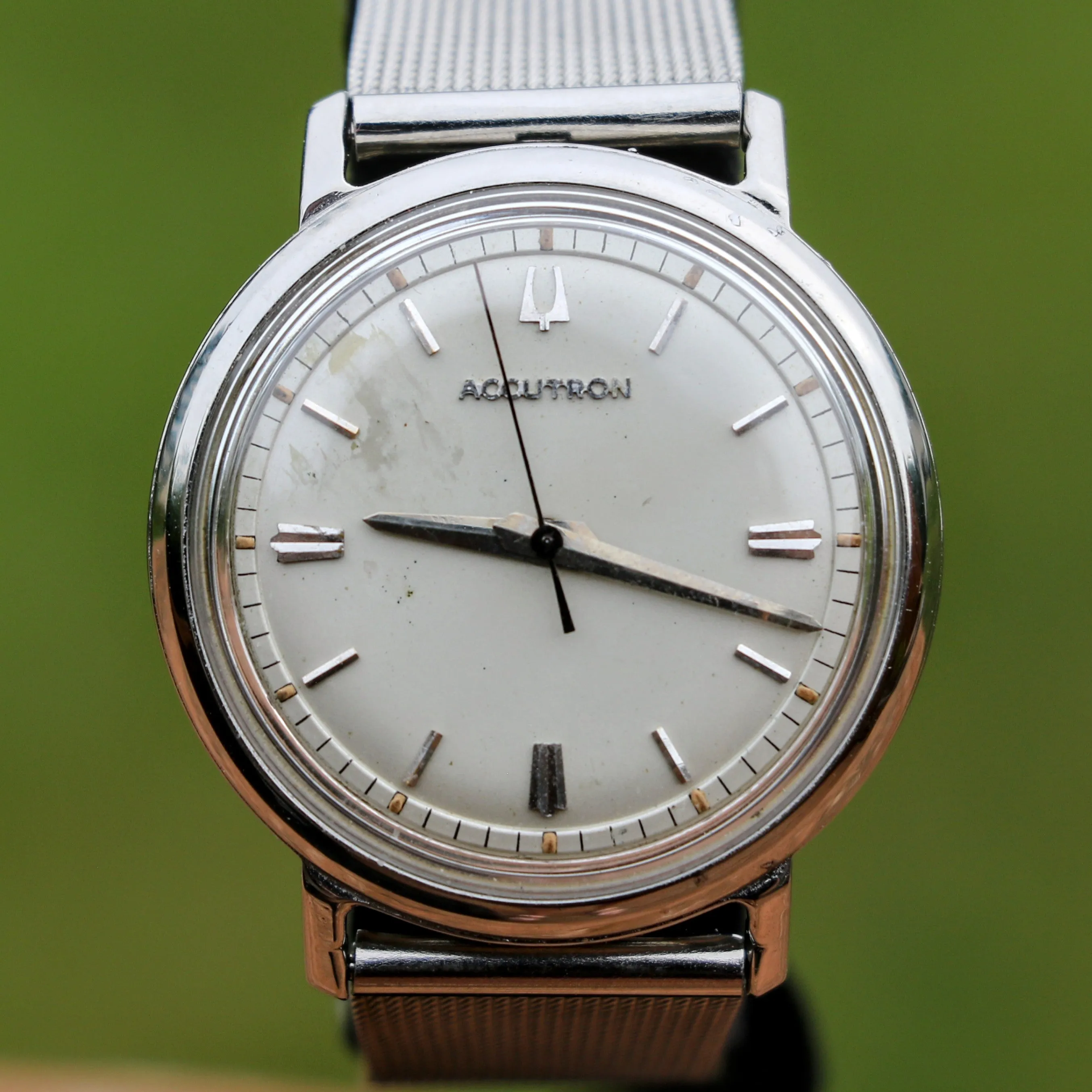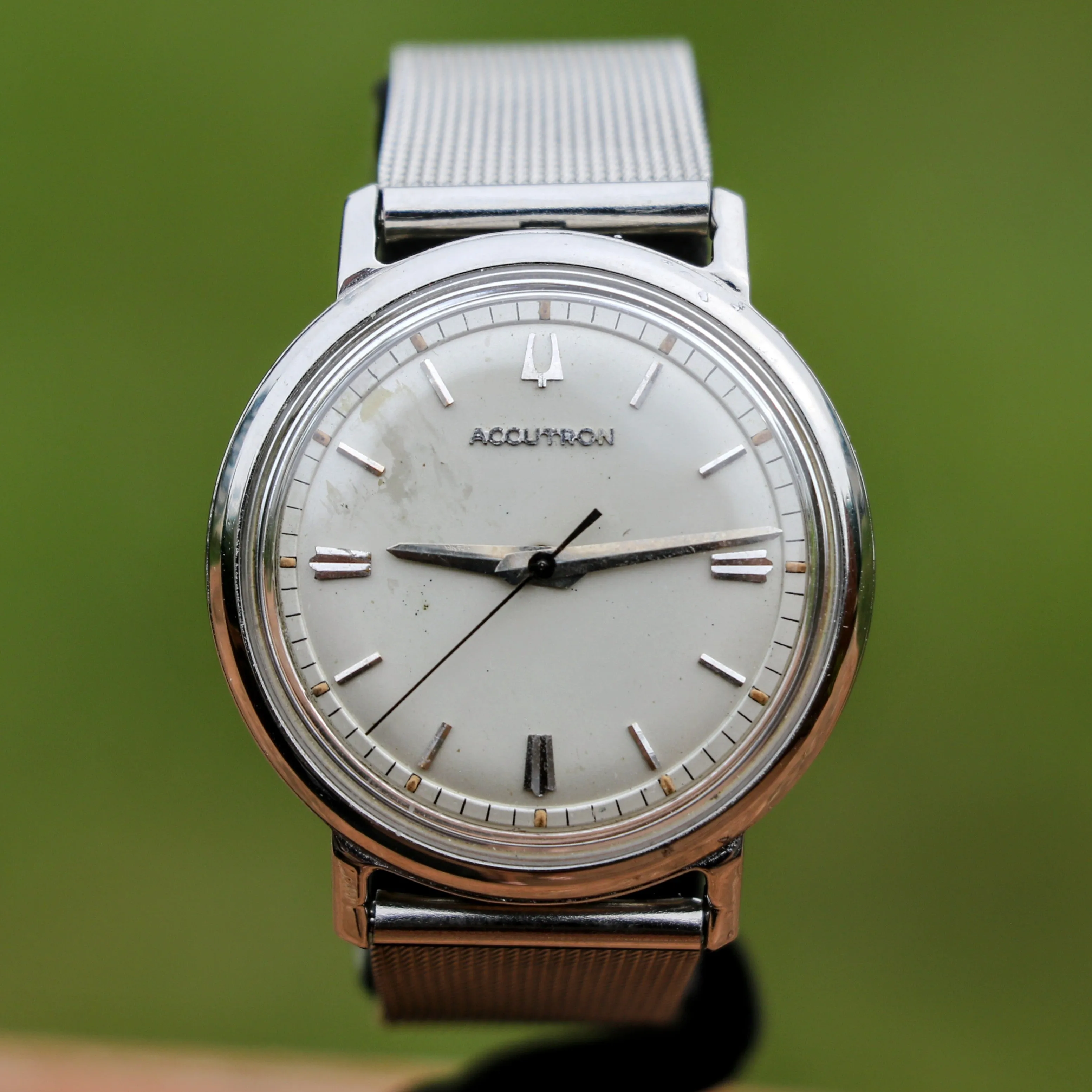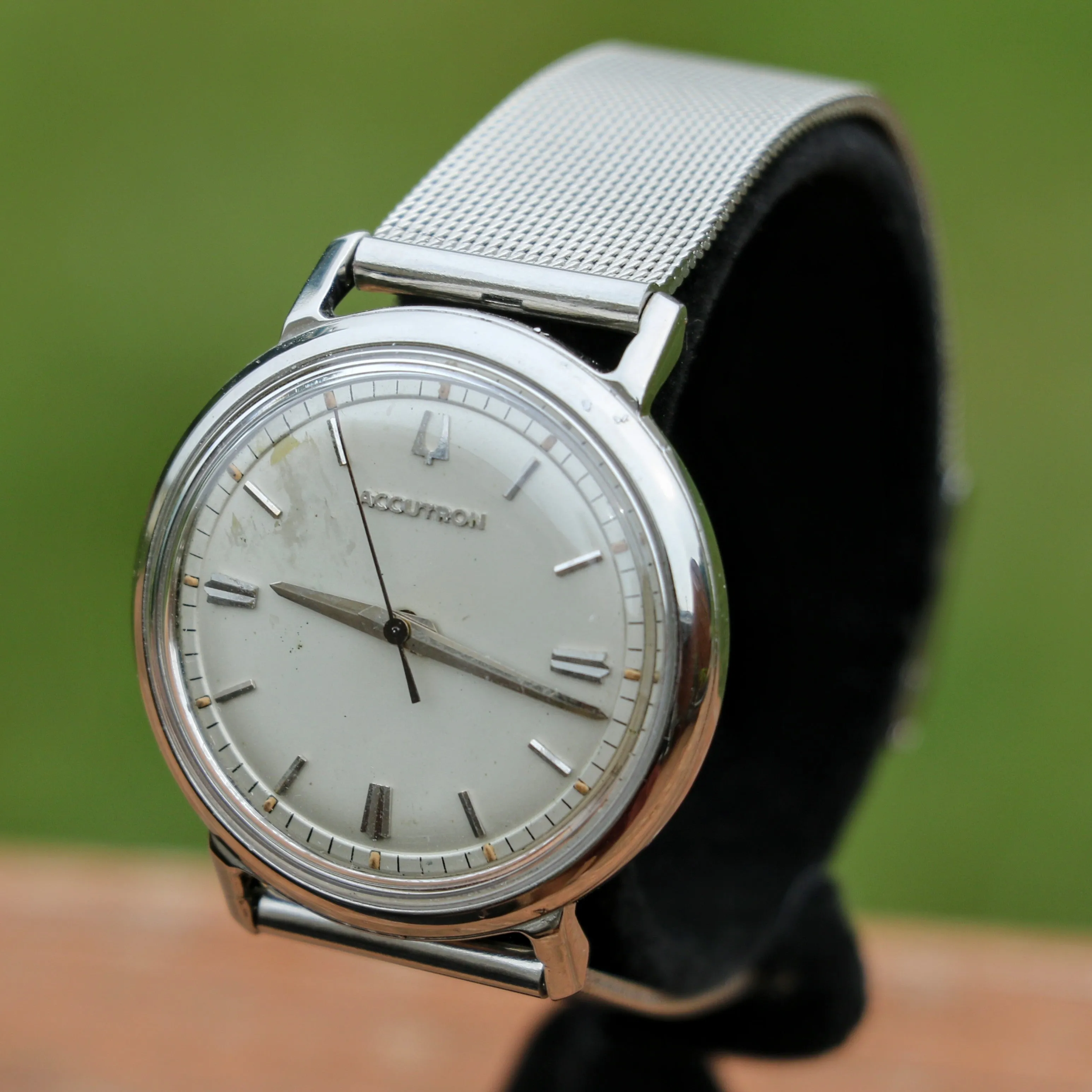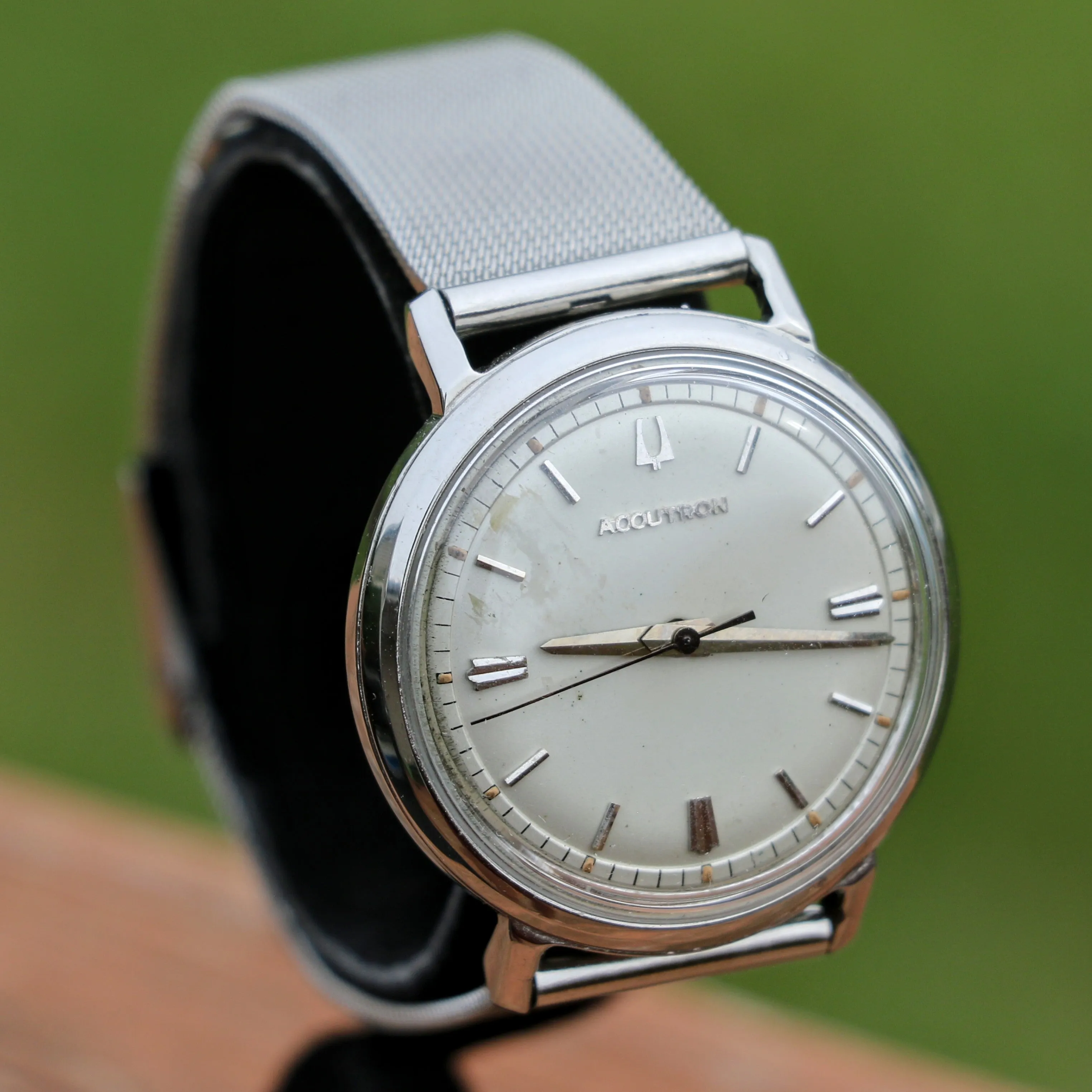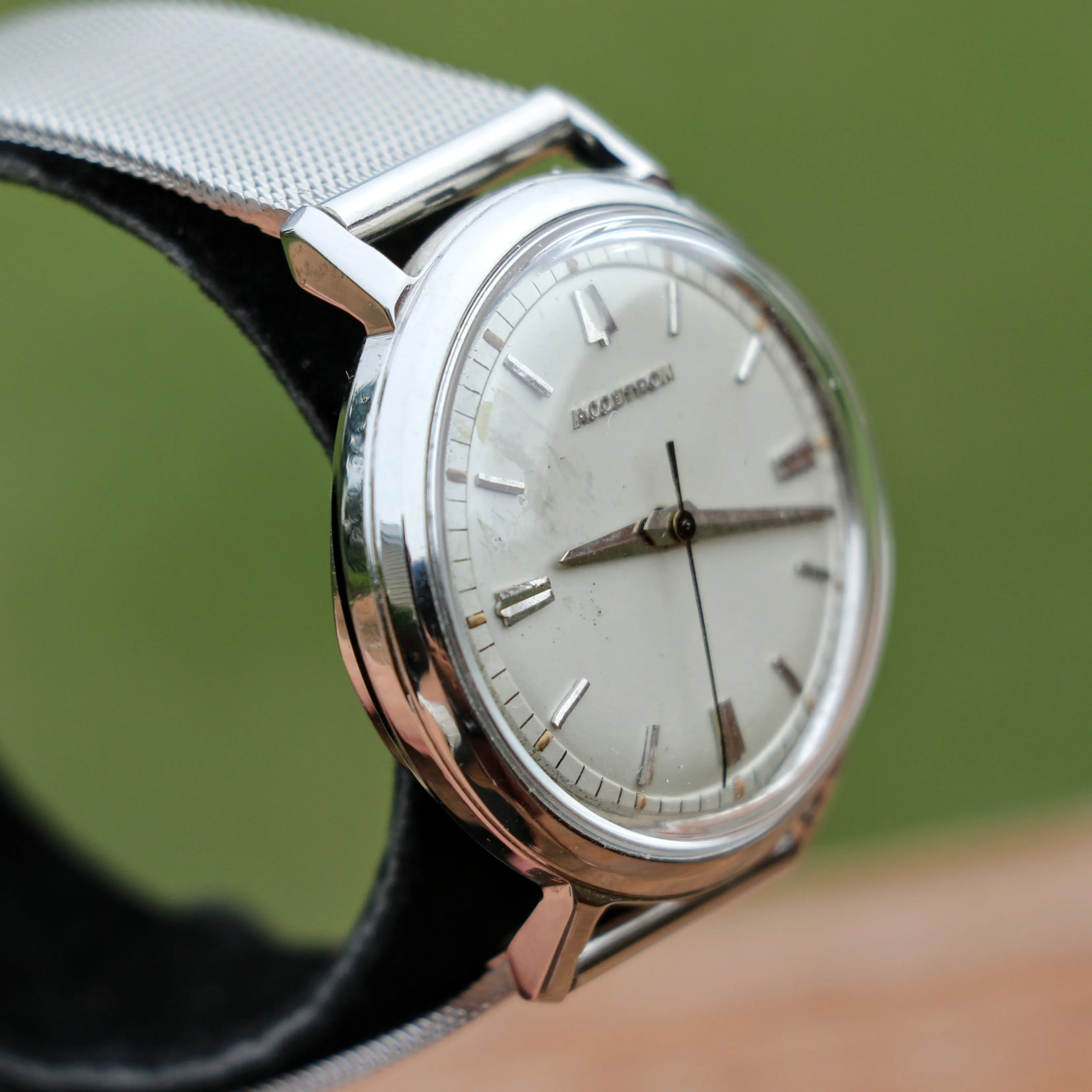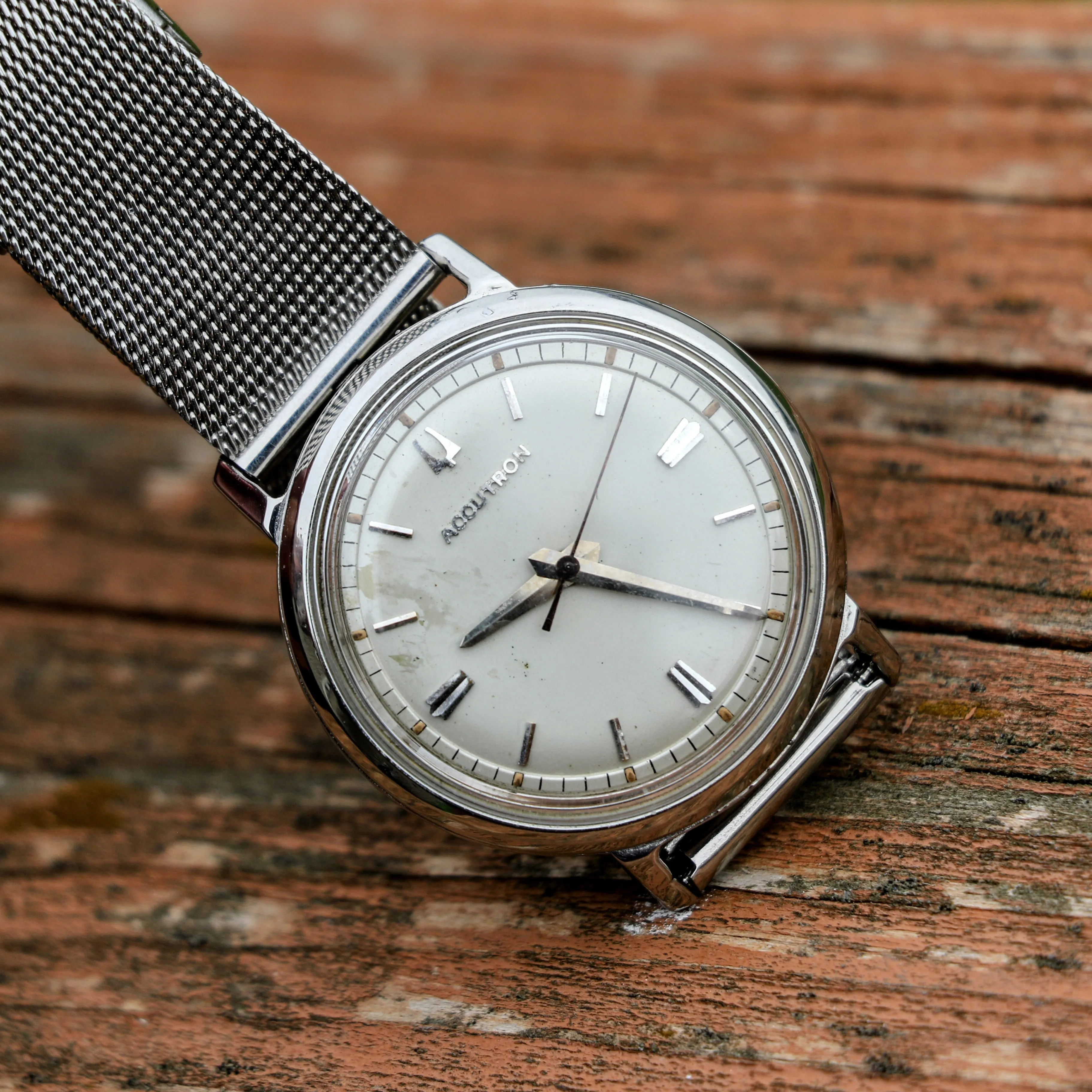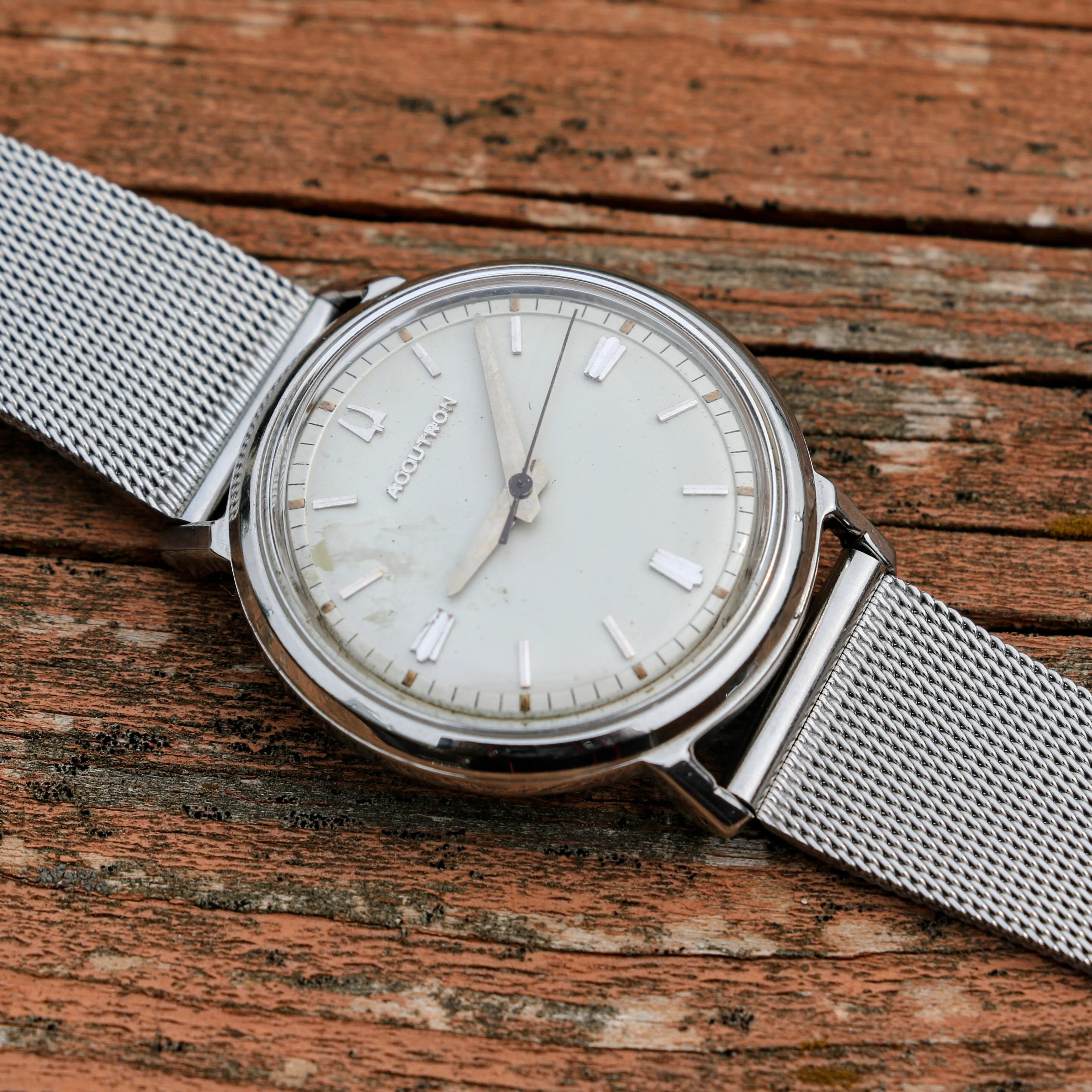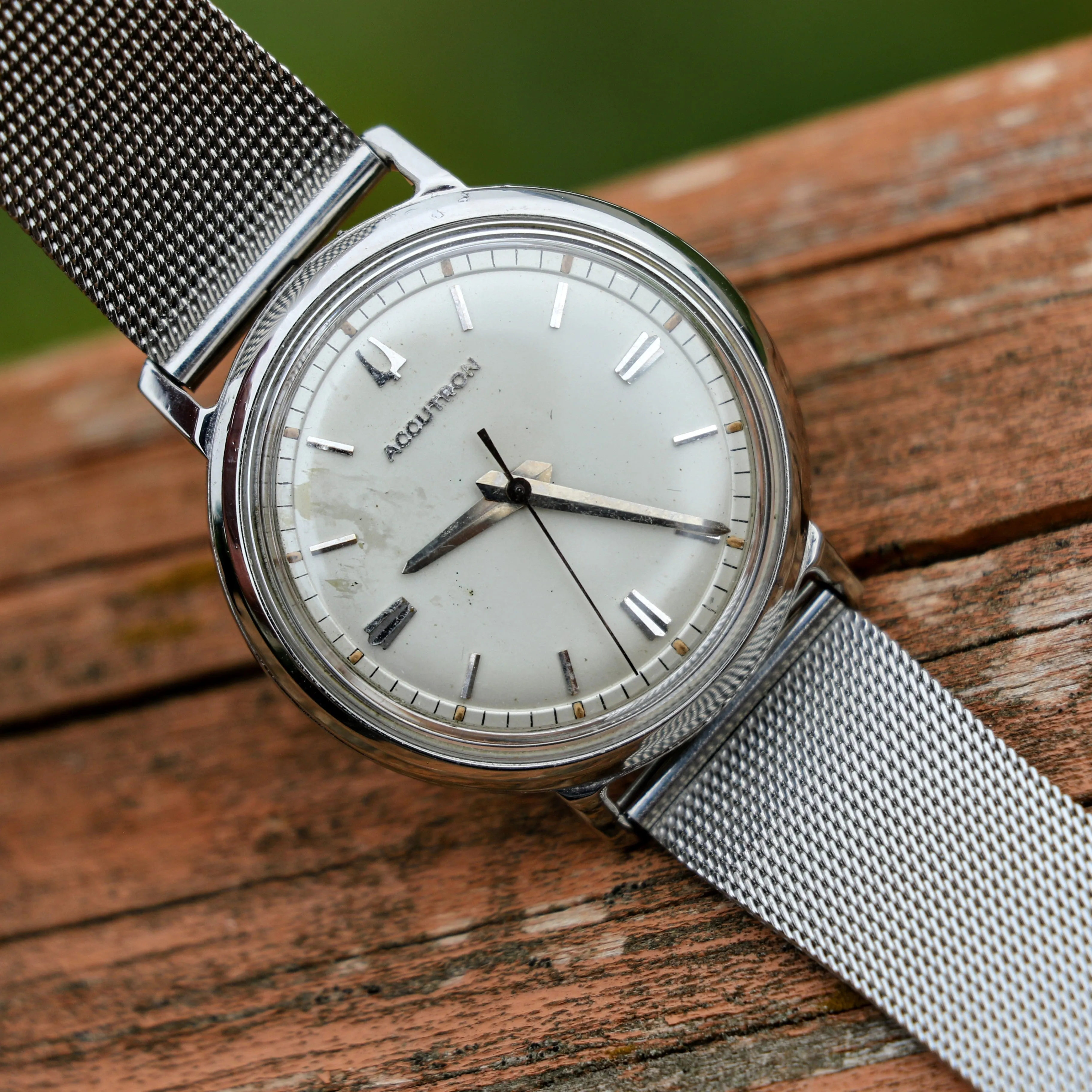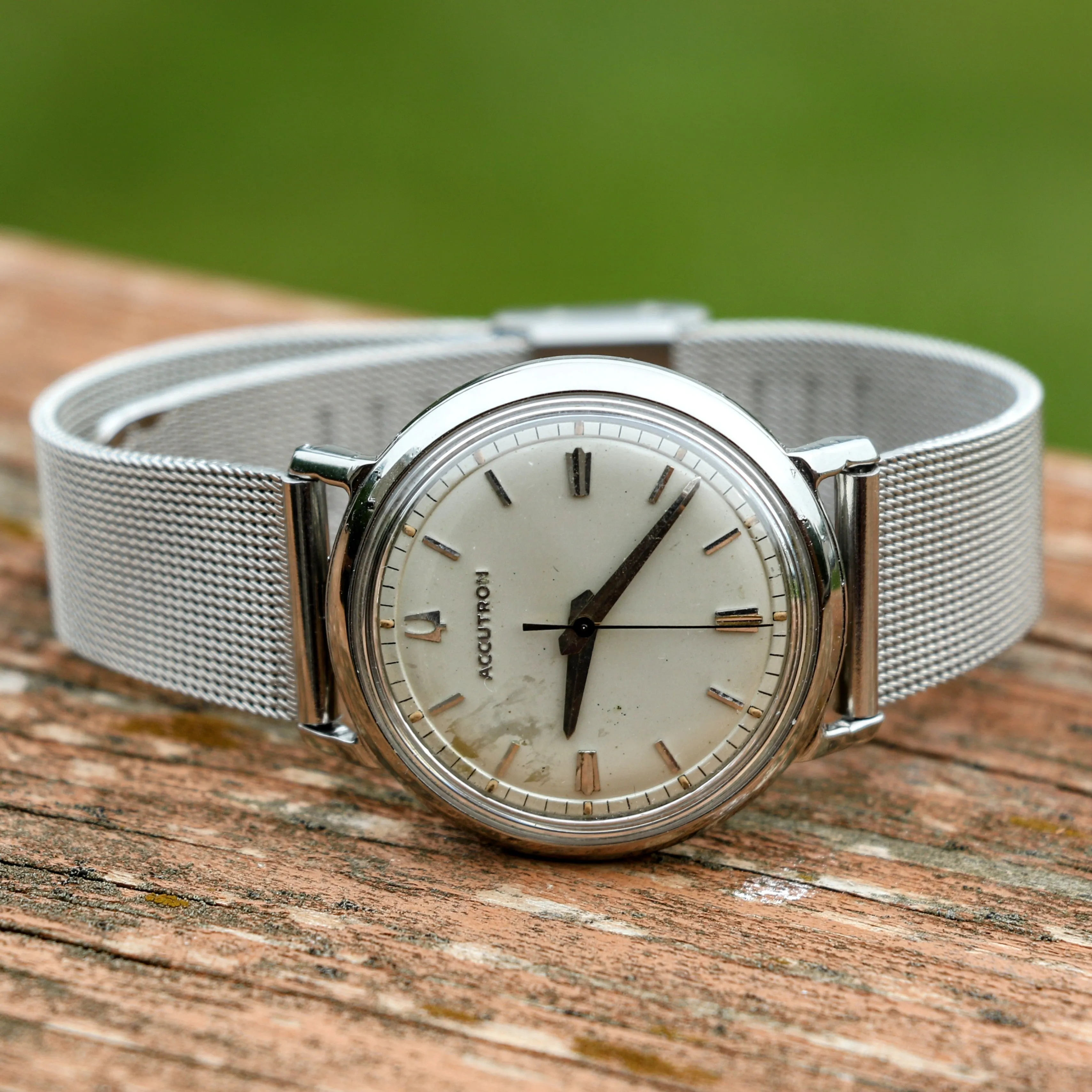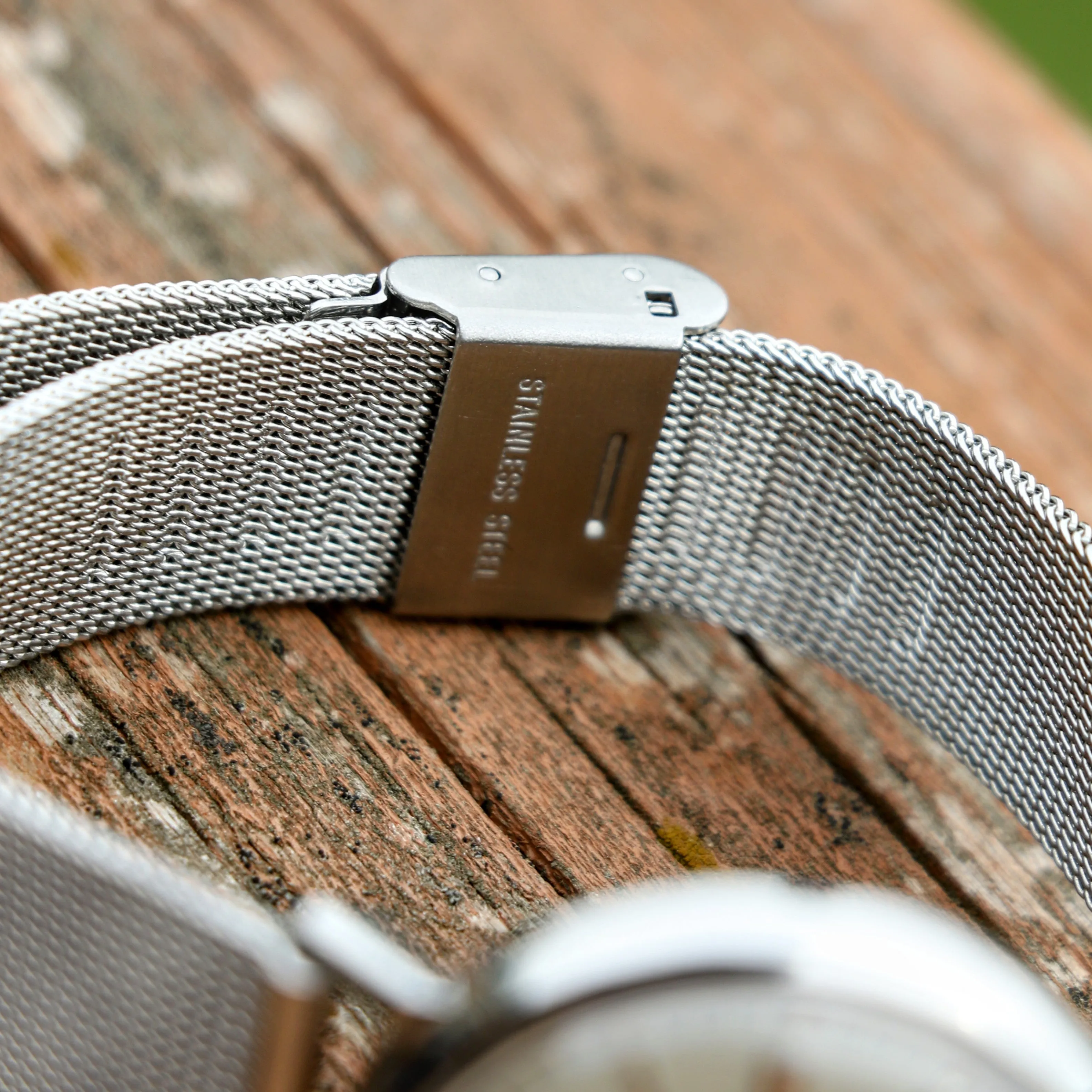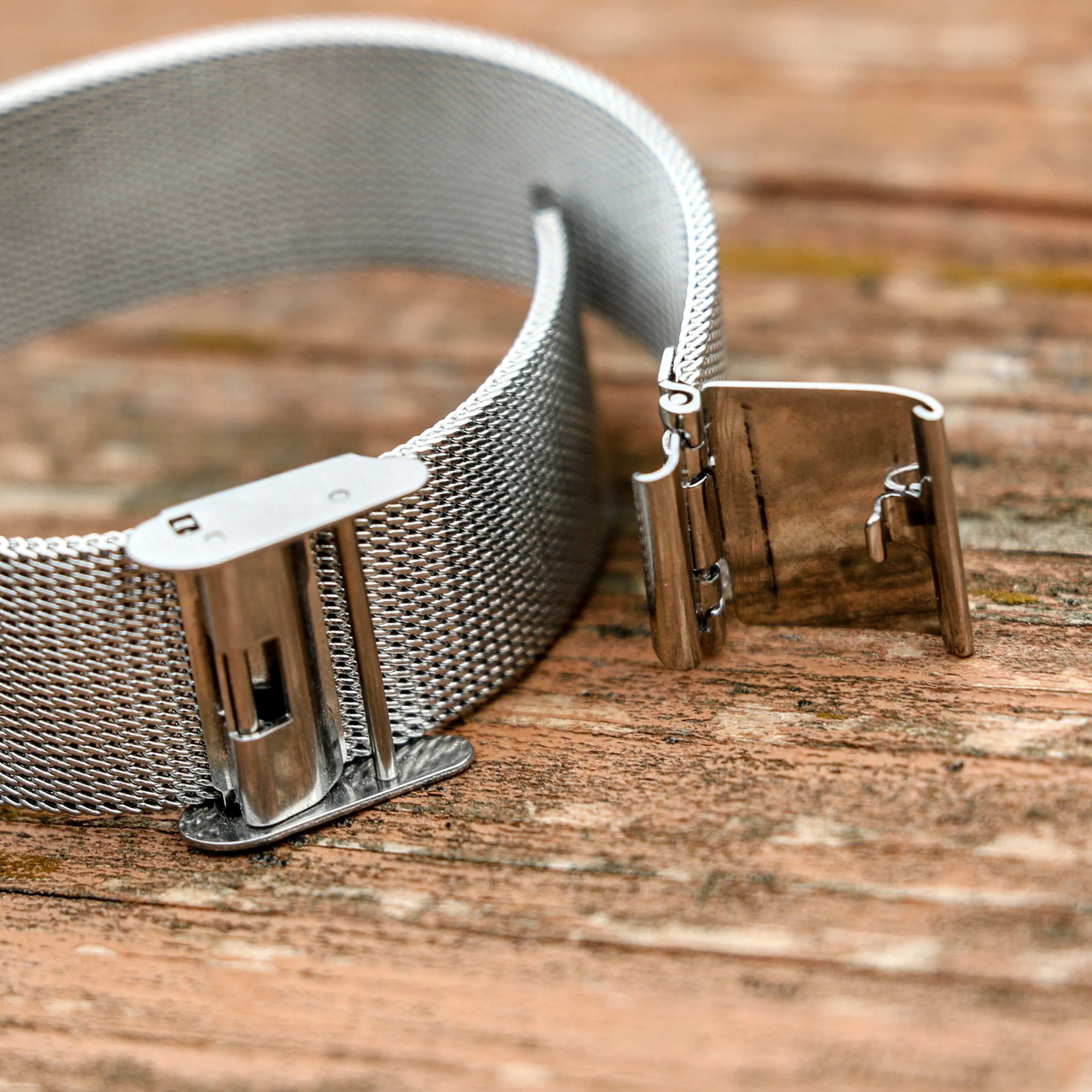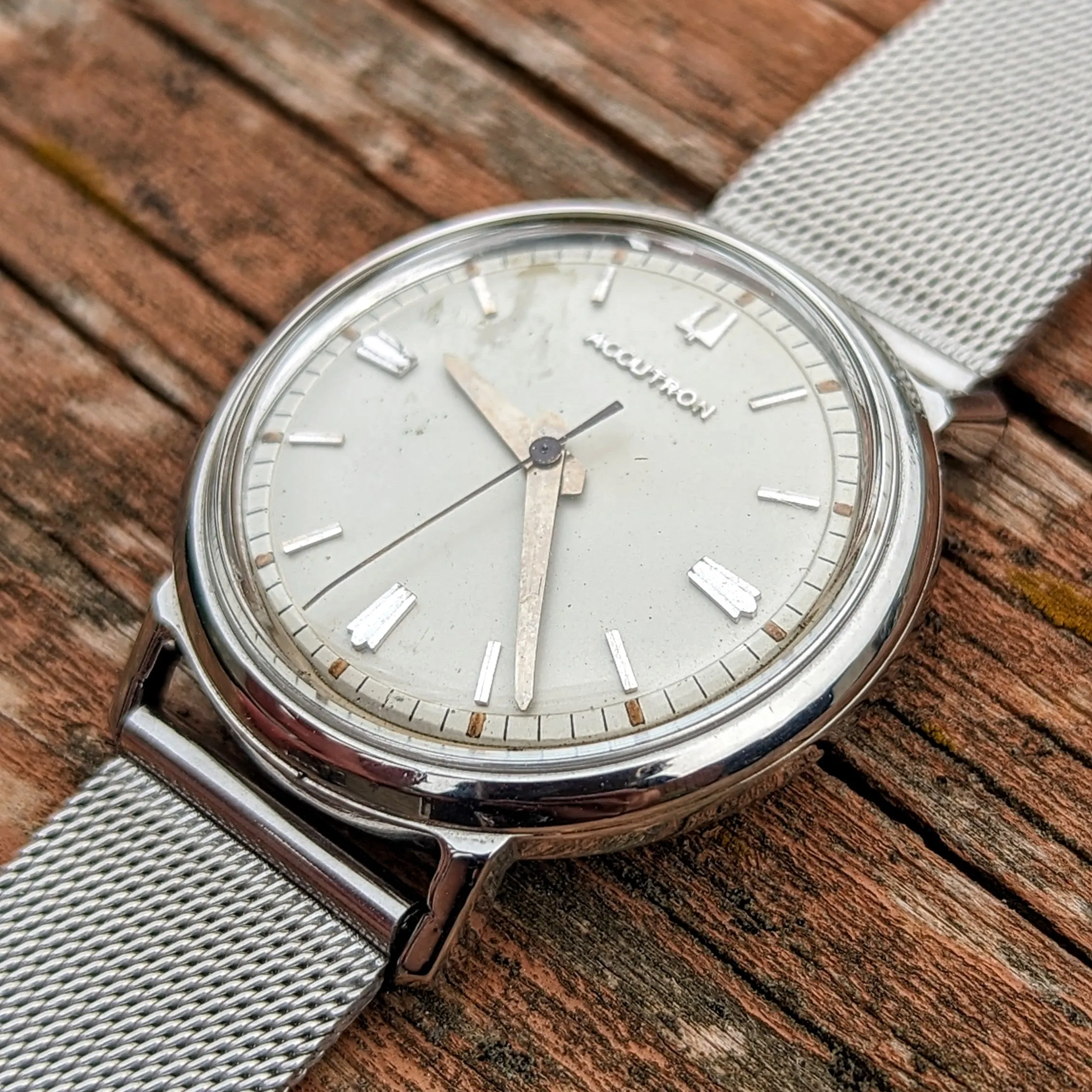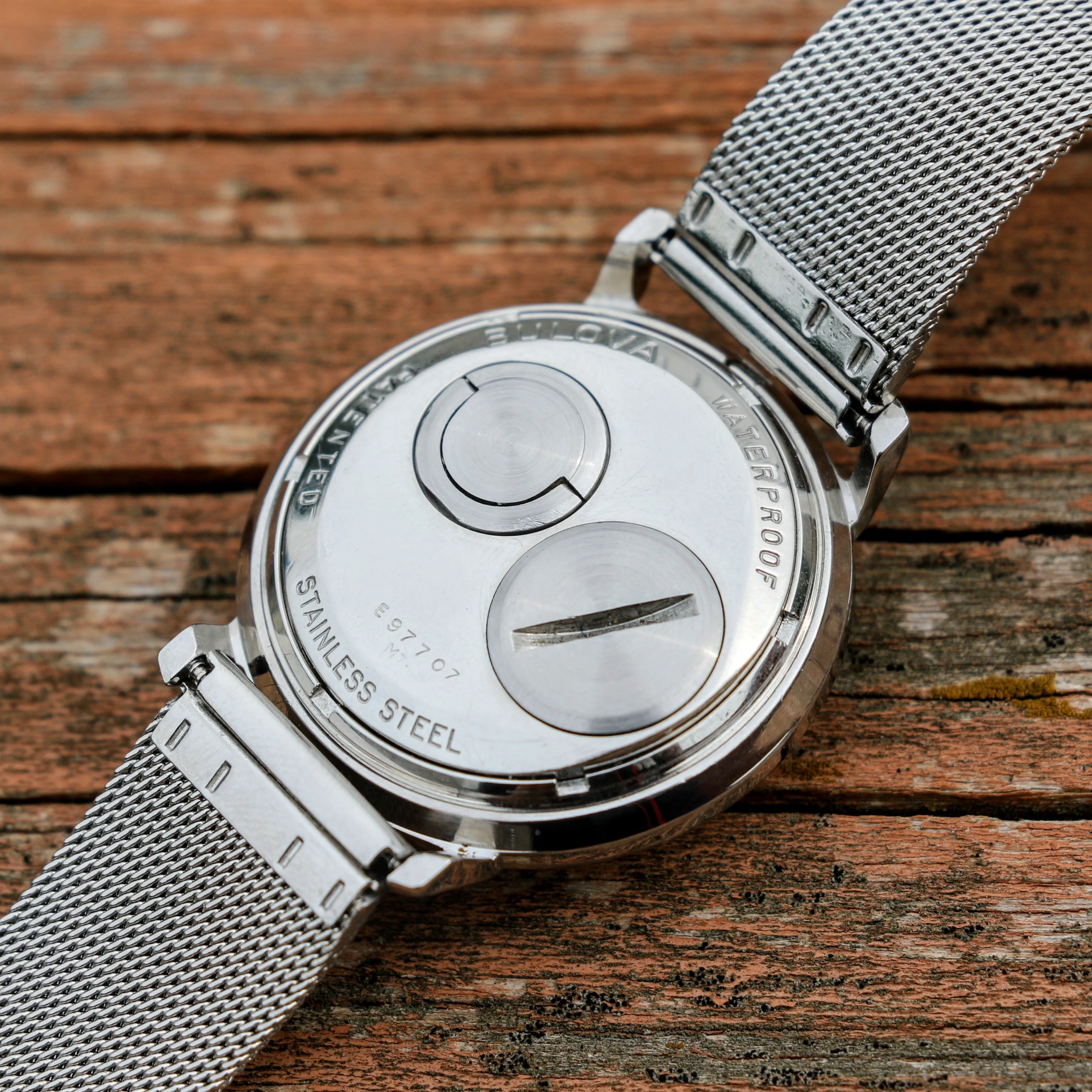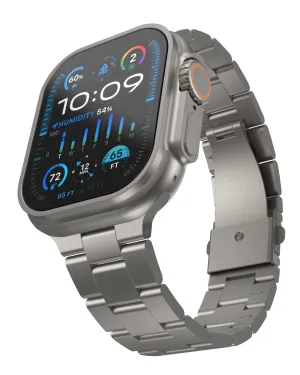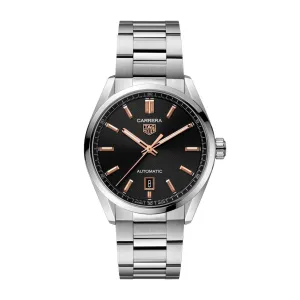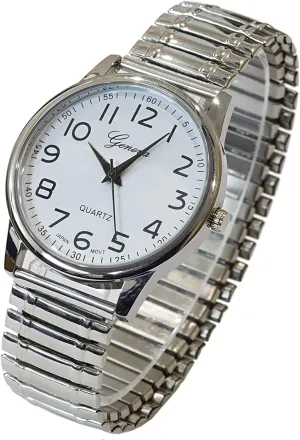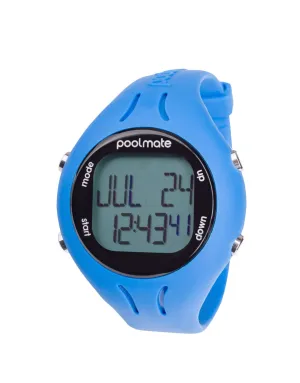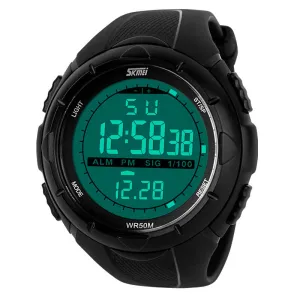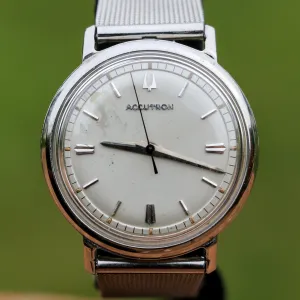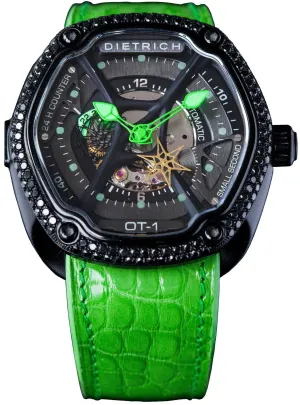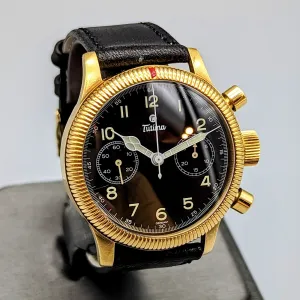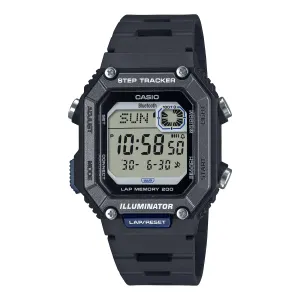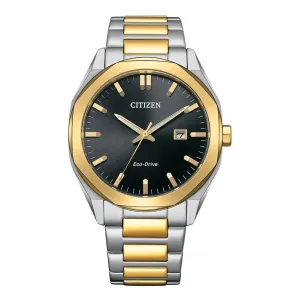Product Details
+BULOVA Accutron
“ACCUTRON – To-morrow’s Watch.”
In the Accutron movement there is a tuning fork where the old watch work used to go, it has no balance or balance spring. Instead, it uses a tuning fork oscillator, driven by a transistor-controlled circuit, it keeps better time for life than any other, the Accutron guarantees average daily accuracy within 2 seconds. The tuning fork mechanism of the Accutron gave it unprecedented accuracy and marvelous technology, thence, Accutron watches found wide acceptance not only from consumers, but also in the worlds of astronautics and aeronautics; the U.S. uses Accuntron movement in satellites and has issued them to all X-15 pilots.
"The tunning fork is the greatest invention since the wheel."
The first movements used a Germanium PNP transistor, but manufacturers phased this type out quickly, so Bulova switched to a Silicon NPN transistor. This required a radical change to the electronic design, including reversing polarity of the battery power and changing the winding of the coils, but it was accomplished nearly transparently.
The tuning fork concept was developed by a Swiss engineer, Max Hetzel, who went to work for Bulova in 1950. He completed a working model of the movement in 1953 and his department created a number of prototypes as well. By 1955, eight watch-sized prototypes were being tested inside the company and Bulova transferred the project to New York. After a series of difficulties, Hetzel was offered a position in William Bennett’s group in New York to help complete the movement.
The design of the original Accutron movement was finalized in the latter half of the 1950s, with Bulova placing tuning fork timers on early spacecraft and satellites. An Accutron timer was placed in the Explorer VI and Explorer VII unmanned orbiters in 1959 and another was used to switch transmission of data aboard Explorer XI on April 27, 1961. Accutron timers and watches would later be used on satellites (Telstar, Tiros, Syncom, Pegasus, and LES), in spacecraft (Explorer, Mercury, Gemini, Agena, and Apollo), and on the wrists of astronauts.
On October 25, 1960, at a press conference, Bulova announced the arrival of the Accutron caliber 214. Then, in 1961, the Basel Fair featured production of Bulova Accutron watches, and sales started later in the same year. “The company sold over 100,000 units in two years, increasing this to 250,000 more in the next two years. The Accutron truly was a product no other company could match.”
The caliber 214 was the basic Accutron movement for 7 years; various versions were also created: 214H (hacking), 214HN, 2141, 2142, and 2143. The first movements lacked a hacking feature, a surprising omission in such an accurate watch. The setting wheel spring was soon modified so it would stop the tuning fork when the crown was pulled. Movements with the hack feature are called Cal. 214H, but many original Cal. 214 movements were retrofitted with a hacking spring.
Bulova was able to force the entire industry to transform. In 1966, Bulova merged with the maker of Universal Geneve, giving a strong new channel especially in Europe. In 1963, inventor Max Hetzel moved to Ebauches SA, and the Swiss watch giant licensed the technology from Bulova in 1968 to bring their own “Swissonic” tuning fork movement to market, as well as the later 720 Hz “Megasonic”. Bulova set up a manufacturing agreement with Citizen of Japan in 1960, moving some production there, and they too licensed and produced their own tuning fork movements in a joint-venture company starting in 1970.
Bulova continued to refine the Accutron movement until it was discontinued in 1977. In 1967, they introduced the second-generation Accutron movement: the caliber 218 and 218D (with date). They replaced caliber 214 in most models before the end of the decade. The caliber 218 was thinner and incorporated many of the changes made to caliber 214 over the previous years. A day/date model appeared in 1969. In 1970, Bulova introduced a compact lady’s model and a version with a second timezone display and the “mini Accutron” was introduced in 1973.
Bulova was acquired by Loews Corporation in 1979, primarily for their military and industrial products. In 2008, Citizen Holdings purchased Bulova, uniting the companies that had been partners since 1960. Today, the Accutron brand remains Bulova’s flagship watch line, though the tuning fork movement has not been produced since 1977, apart from a hand-made limited-edition 50th anniversary reissue in 2010.
1967 BULOVA
Accutron 214
Wristwatch
Introduced in 1960 and first commercialized in 1961, The caliber 214 was the first Bulova Accutron movement produced, and the first commercial tuning fork movement as well. The Buelova Accutron 214 was incredibly successful with well over 400,000 pieces produced through 1968.
Today, we are presenting the most collectible Accutron movement, and one of the most popular movements of the 1960s. This is a vintage Bulova Accutron 214 wristwatch, all stainless steel and dated from 1967. It is an immaculate timepiece.
It is a mechanical watch electronically controlled tuning fork with a Bulova 214 movement, 15 jewels, sweep second. The tuning fork 214 movement vibrates at 360 Hz (as did all Bulova Accutron movements) with a 300-tooth index wheel and uses a button-cell battery. Attached to one limb of the tuning fork is a minute pawl tipped with a nearly invisible ruby jewel. As the tuning fork vibrates the pawl moves back and forth and this drives an index wheel with 360 teeth. The index wheel especially was at the time a wonder of miniaturization and micro-engineering, with teeth so fine that they are invisible to the naked eye. Because so much of the space is taken up by the battery and tuning fork, Bulova uses an indirect sweep seconds wheel driven by the center wheel.
Like other Accutrons, the 214 movement has no conventional crown and is set using a recessed key set into the back of the watch, adjacent to the battery door. This example is cased in a 34.6mm handsome stainless-steel round case and fancy lug design. The case back is signed: Bulova Patented Waterproof. Matching perfect, this watch also comes on a super cool all stainless-steel two-piece mesh bracelet.
The original silver dial features the inner ring “hidden spaceview”, silver hour markers, luminous dots and silver matching hour and minute hands and a black sweep-second hand. The dial is also signed with the Accutron name and logo on it. Beware, the dial has some patina/discoloration between 9 – 11 o’clock.
It is a very attractive looking wristwatch in good condition and runs very well.
Thank you for looking! Please feel free to contact us with any questions or respectful offers.
Measurements (mm):
Case Diameter 34.6
Case Lug to Lug 39.7
Case Thickness 13
Lug Width 18
Band Width 18
Vintage watches are traditionally smaller than today's watches. Men’s watches typically measure between 29-36mm wide (some larger, some smaller) excluding the crown. In the listing details we typically try to do our best to list all pertinent dimensions of a watch. If you don't see it, or we failed to do so, please reach out to us. Women’s watches from the 1900s-1970s were also much smaller than today's offerings. Please also feel free to ask any questions you have pertaining to size.
We prefer to shoot photographs outside when weather is permitting. However, when we shoot indoors, please be aware that we shoot our photographs inside of lightboxes that are lit with 360 LED bulbs. This indeed magnifies any flaws. Usually, they are much less obvious to the naked eye. Having said that, we never photoshop any of our photography, remove blemishes, etc. We adjust lighting when necessary, but what you see is what you are getting, and we take pride in that.
The condition is pre-owned.
The item may have some signs of cosmetic wear but is fully operational and functions as intended.
Please review the photos and feel free to ask any questions you may have.
It will be carefully packed.
Please view our other listings.
Thank you for looking!
WA-3548
“ACCUTRON – To-morrow’s Watch.”
In the Accutron movement there is a tuning fork where the old watch work used to go, it has no balance or balance spring. Instead, it uses a tuning fork oscillator, driven by a transistor-controlled circuit, it keeps better time for life than any other, the Accutron guarantees average daily accuracy within 2 seconds. The tuning fork mechanism of the Accutron gave it unprecedented accuracy and marvelous technology, thence, Accutron watches found wide acceptance not only from consumers, but also in the worlds of astronautics and aeronautics; the U.S. uses Accuntron movement in satellites and has issued them to all X-15 pilots.
"The tunning fork is the greatest invention since the wheel."
The first movements used a Germanium PNP transistor, but manufacturers phased this type out quickly, so Bulova switched to a Silicon NPN transistor. This required a radical change to the electronic design, including reversing polarity of the battery power and changing the winding of the coils, but it was accomplished nearly transparently.
The tuning fork concept was developed by a Swiss engineer, Max Hetzel, who went to work for Bulova in 1950. He completed a working model of the movement in 1953 and his department created a number of prototypes as well. By 1955, eight watch-sized prototypes were being tested inside the company and Bulova transferred the project to New York. After a series of difficulties, Hetzel was offered a position in William Bennett’s group in New York to help complete the movement.
The design of the original Accutron movement was finalized in the latter half of the 1950s, with Bulova placing tuning fork timers on early spacecraft and satellites. An Accutron timer was placed in the Explorer VI and Explorer VII unmanned orbiters in 1959 and another was used to switch transmission of data aboard Explorer XI on April 27, 1961. Accutron timers and watches would later be used on satellites (Telstar, Tiros, Syncom, Pegasus, and LES), in spacecraft (Explorer, Mercury, Gemini, Agena, and Apollo), and on the wrists of astronauts.
On October 25, 1960, at a press conference, Bulova announced the arrival of the Accutron caliber 214. Then, in 1961, the Basel Fair featured production of Bulova Accutron watches, and sales started later in the same year. “The company sold over 100,000 units in two years, increasing this to 250,000 more in the next two years. The Accutron truly was a product no other company could match.”
The caliber 214 was the basic Accutron movement for 7 years; various versions were also created: 214H (hacking), 214HN, 2141, 2142, and 2143. The first movements lacked a hacking feature, a surprising omission in such an accurate watch. The setting wheel spring was soon modified so it would stop the tuning fork when the crown was pulled. Movements with the hack feature are called Cal. 214H, but many original Cal. 214 movements were retrofitted with a hacking spring.
Bulova was able to force the entire industry to transform. In 1966, Bulova merged with the maker of Universal Geneve, giving a strong new channel especially in Europe. In 1963, inventor Max Hetzel moved to Ebauches SA, and the Swiss watch giant licensed the technology from Bulova in 1968 to bring their own “Swissonic” tuning fork movement to market, as well as the later 720 Hz “Megasonic”. Bulova set up a manufacturing agreement with Citizen of Japan in 1960, moving some production there, and they too licensed and produced their own tuning fork movements in a joint-venture company starting in 1970.
Bulova continued to refine the Accutron movement until it was discontinued in 1977. In 1967, they introduced the second-generation Accutron movement: the caliber 218 and 218D (with date). They replaced caliber 214 in most models before the end of the decade. The caliber 218 was thinner and incorporated many of the changes made to caliber 214 over the previous years. A day/date model appeared in 1969. In 1970, Bulova introduced a compact lady’s model and a version with a second timezone display and the “mini Accutron” was introduced in 1973.
Bulova was acquired by Loews Corporation in 1979, primarily for their military and industrial products. In 2008, Citizen Holdings purchased Bulova, uniting the companies that had been partners since 1960. Today, the Accutron brand remains Bulova’s flagship watch line, though the tuning fork movement has not been produced since 1977, apart from a hand-made limited-edition 50th anniversary reissue in 2010.
1967 BULOVA
Accutron 214
Wristwatch
Introduced in 1960 and first commercialized in 1961, The caliber 214 was the first Bulova Accutron movement produced, and the first commercial tuning fork movement as well. The Buelova Accutron 214 was incredibly successful with well over 400,000 pieces produced through 1968.
Today, we are presenting the most collectible Accutron movement, and one of the most popular movements of the 1960s. This is a vintage Bulova Accutron 214 wristwatch, all stainless steel and dated from 1967. It is an immaculate timepiece.
It is a mechanical watch electronically controlled tuning fork with a Bulova 214 movement, 15 jewels, sweep second. The tuning fork 214 movement vibrates at 360 Hz (as did all Bulova Accutron movements) with a 300-tooth index wheel and uses a button-cell battery. Attached to one limb of the tuning fork is a minute pawl tipped with a nearly invisible ruby jewel. As the tuning fork vibrates the pawl moves back and forth and this drives an index wheel with 360 teeth. The index wheel especially was at the time a wonder of miniaturization and micro-engineering, with teeth so fine that they are invisible to the naked eye. Because so much of the space is taken up by the battery and tuning fork, Bulova uses an indirect sweep seconds wheel driven by the center wheel.
Like other Accutrons, the 214 movement has no conventional crown and is set using a recessed key set into the back of the watch, adjacent to the battery door. This example is cased in a 34.6mm handsome stainless-steel round case and fancy lug design. The case back is signed: Bulova Patented Waterproof. Matching perfect, this watch also comes on a super cool all stainless-steel two-piece mesh bracelet.
The original silver dial features the inner ring “hidden spaceview”, silver hour markers, luminous dots and silver matching hour and minute hands and a black sweep-second hand. The dial is also signed with the Accutron name and logo on it. Beware, the dial has some patina/discoloration between 9 – 11 o’clock.
It is a very attractive looking wristwatch in good condition and runs very well.
Thank you for looking! Please feel free to contact us with any questions or respectful offers.
Measurements (mm):
Case Diameter 34.6
Case Lug to Lug 39.7
Case Thickness 13
Lug Width 18
Band Width 18
Vintage watches are traditionally smaller than today's watches. Men’s watches typically measure between 29-36mm wide (some larger, some smaller) excluding the crown. In the listing details we typically try to do our best to list all pertinent dimensions of a watch. If you don't see it, or we failed to do so, please reach out to us. Women’s watches from the 1900s-1970s were also much smaller than today's offerings. Please also feel free to ask any questions you have pertaining to size.
We prefer to shoot photographs outside when weather is permitting. However, when we shoot indoors, please be aware that we shoot our photographs inside of lightboxes that are lit with 360 LED bulbs. This indeed magnifies any flaws. Usually, they are much less obvious to the naked eye. Having said that, we never photoshop any of our photography, remove blemishes, etc. We adjust lighting when necessary, but what you see is what you are getting, and we take pride in that.
The condition is pre-owned.
The item may have some signs of cosmetic wear but is fully operational and functions as intended.
Please review the photos and feel free to ask any questions you may have.
It will be carefully packed.
Please view our other listings.
Thank you for looking!
WA-3548




